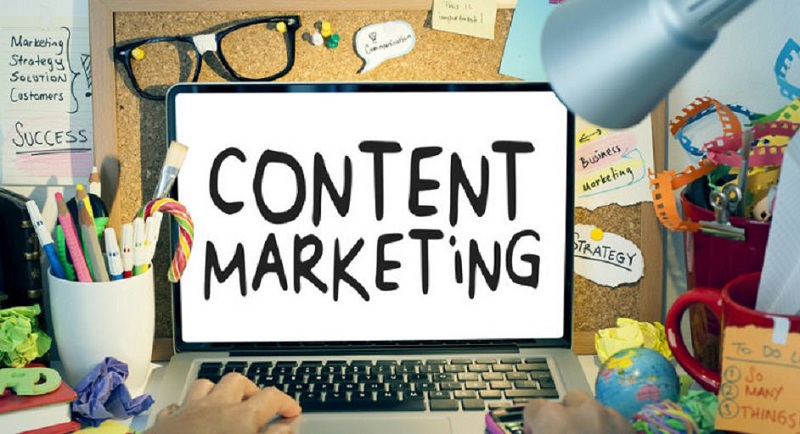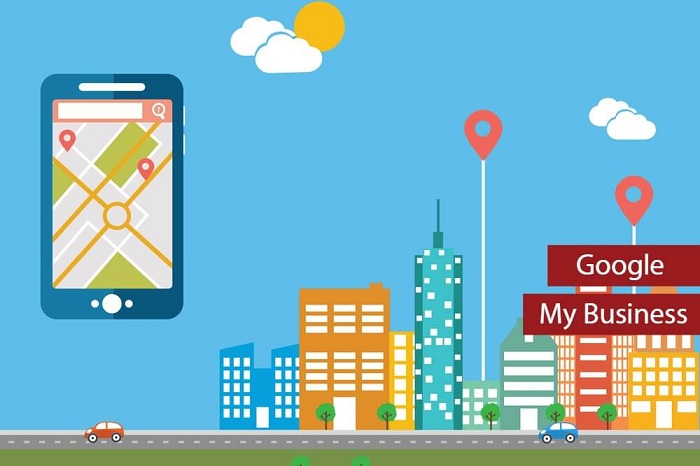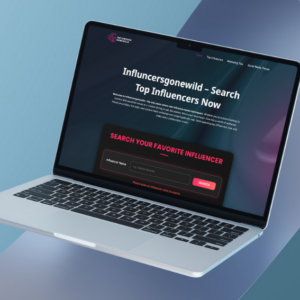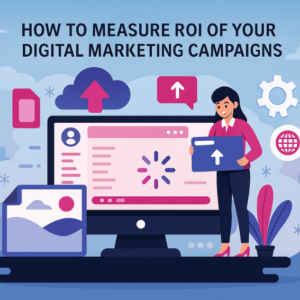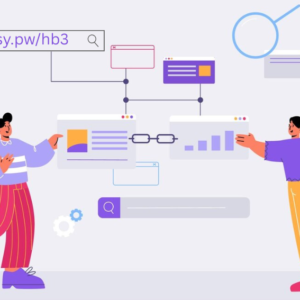Businesses are using a wide range of digital marketing strategies to grab customer attention and hopefully engage them. SMS marketing, in particular, has gained steam with its high, unique open rates of roughly 98% compared to other channels and for driving conversions and sales. One of the best ways to enact an SMS marketing campaign is by using an SMS sales funnel.
So, what is and why does it matter for businesses? Let’s explore.
What is an SMS Sales Funnel?

An SMS sales funnel is a defined process used to take potential customers through the various stages of a buying journey through text messages. The funnel is made up of different stages that businesses can employ to nurture leads into customers – which is very similar to a traditional sales funnel. The key difference? It leverages SMS communication to provide instant engagement and personalized interactions.
A well-crafted SMS sales funnel can include:
- Lead Generation: Capturing potential customers via opt-ins, landing pages, or promotions
- Lead Nurturing: Sending along content of value, reminders, and personalized offers
- Conversion: Encouraging customers to take an action such as a purchase
- Retention: Following up for long-term relationships via exclusive deals and loyalty programs
Here is the breakdown of the stages of an SMS sales funnel:
Lead Generation
At the top of the funnel, you’ll want to focus on securing potential customer the first way you can get someone both involved to your text message, whether this is some sort of discount, an exclusive offer to your business, or a useful resource like a PDF in exchange for their phone number review for review, lead generation is the 1st stage of building an SMS list of high-quality customer.
Opt-in Forms
Opt-in forms are a super-simple way to obtain phone numbers and build your SMS subscriber base. The forms can be found on your web-site, social media pages or landing pages. The goal is to have them opt-in to get SMS updates while providing a good reason to do so. When using opt-in forms effectively you get the user (potential customer) to focus on you while also providing them with some sort of benefit.
How to execute:
The biggest trick to getting users to opt-in is providing a clear, enticing benefit. For example, discounts, free trials or exclusive content (for SMS subscribers only like a free e-book etc.):
“Sign up now for exclusive SMS updates and get 20% off your first purchase!”
“Join our SMS club for a free 7-day trial of our premium service! Text JOIN to 12345 now.”
However, do make sure you’re placing the opt-in form in the high-traffic areas of your website or social media pages. You can also get creative and add some type of pop-up, banner of full page on your home page to draw interested viewers’ attention.
Make it fully as easy and simple as possible, to make it like a 30-second quickly form that only asks for the person’s phone number and to indicate that they consent to receive messages, is the best way and easiest way to increase sign-up numbers. The form will benefit with a clear, direct call to action (CTA), so use Call to action words and phase such as “Start Now” or “Get Your Discount” to encourage the users to act immediately.
Keyword Campaigns
Keyword campaigns allow potential customers to text a keyword to a short code or phone number to subscribe to your SMS list that’s why this method is extremely simple and effective, as it requires no additional effort from the user other than texting a word, making it perfect for use across multiple channels, including TV ads, print, social media, and in-store signage.
How to execute:
To execute it, advertise the keyword and the benefit of texting it because keywords should be easy to remember, short, and relevant to the promotion you’re offering. Here are the examples of it:
“Text SAVE50 to 12345 for 50% off your first purchase! Don’t miss out.”
Use these SMS campaigns across various touchpoints and also share the keyword in emails, social media posts, TV commercials, or even on product packaging for better engagement.
After a customer texts the keyword, send a confirmation message to ensure they are subscribed and inform them of what’s next:
“You’re entered to win! We’ll notify you if you’re the lucky winner. Keep an eye on your texts!”
Contests and Giveaways
Contests and giveaways are an easy way to fast track an SMS subscriber list. Offering prizes and/or valuable incentives to get people to opt-in to your list and provide a phone number. This is a prime way to add excitement while also increasing engagement associated with your brand.
How to execute:
Choose a popular prize (like a product, service, or gift card) that is relevant to your target audience, and you can send a message to them like:
“Win a year’s worth of free service! Text ENTER to 12345 to get started.”
Also announce your contest across multiple channels, including social media, email, and on your website, because the more you promote it, the more entries you’ll get. Along with it, also ensure that the instructions for entering the contest are simple and straightforward so that Participants know exactly what to do and what they will receive by opting into the SMS list.
“Text WIN to 12345 to sign up for our SMS list and automatically enter to win!”
You can keep engaging the new subscribers once the contest is completed by offering them a post-contest special or idea to keep them engaged with your list.
Exclusive Offers
Exclusive offers are a good way to get people to sign up to your SMS list, as when you give someone an exclusive, when you put something that will only be claimed by them when they sign up, it creates urgency and exclusivity that will entice them to opt-in. The exclusive offers can take many forms, from discounts to something that will give them exclusive access to new products or services.
How to execute:
Offer a discount that’s only available to SMS subscribers. This type of exclusivity of the offer makes the opt-in process more attractive.
“Text DEAL to 12345 for 30% off your next purchase! Exclusive offer just for SMS subscribers.”
You can also offer early access to new products, sales, or events or deals that are available for a limited time to encourage immediate sign-up through SMS.
“VIP Early Access! Text VIP to 12345 and get first dibs on our new collection before it’s released to the public. – today only!
QR Codes
QR codes are a simple, contactless way for customers to opt-in to your SMS list. Places where you can place QR code are virtually endless – on your in-store displays or signage, printed on your product packaging, or any other printed material that you may provide customers to provide information to contact – customers scan the QR code and sign up for SMS alerts!
How to execute:
Use QR codes on product packaging, flyers, posters or receipts. Chances are, this is where your target audience will see and connect with them through actionable messages like
“Scan this QR code to join our SMS club and get 20% off your next purchase”
Moreover, you can also ensure that your QR code is accompanied by a clear call-to-action explaining what users will get when they scan it.
“Scan this code to sign up for text alerts and receive 10% off your first purchase!”
Lead Nurturing
Once you have generated a lead, the next step is to nurture it with targeted, relevant, valuable content. The goal is to build this trust and keep your brand top-of-mind, to help guide them toward a purchase decision., With SMS, you can send timely updates and respond to questions, and provide timely individual offers and promotions with different tactics such as:
Personalized Offers
Personalized offers are a great way to make your customers feel valued by providing promotions or discounts that are personalized to their interests, activities, and/or prior behavior. Through their activity, purchase history and browsing data, you can create offers noted for their pertinence and thus are very effective in areas of conversion to vary membership click through rates.
How to execute:
Use data from your CRM or website analytics to understand customer behaviors, such as: pages followed, products viewed, account sign-ups, or past purchases. In basing your list segment on those insights, your subscribers are segmented based on preferences (likes) or behaviors (previous purchases), based on geography (location), you share the most relevant offers.
After screening all that information, send these messages at optimal times based on when the customer is most likely to be in a buying mindset. For example, shortly after browsing or adding items to the cart but not completing the purchase.
“Hi [Name], we saw you checked out [Product] earlier. Here’s a 10% discount to make it yours. Use code: THANKYOU10 at checkout!
Exclusive Content
Exclusive content serves to engage your audience, giving them something more than just products, but value – establishing your business as an expert they can trust. When you share valuable tips or guides, or behind-the-scenes insight such as demonstrations that engage and educate your leads, they stay connected to your brand.
How to execute:
Share sneak peeks into how your product is made or the process behind your service. This gives your audience a personal look into your business and builds trust.
“Hi [Name], take an exclusive look behind the scenes of our design process. See how we create [Product]. Watch the video here!“
Provide helpful resources such as how to, tips or tutorials demonstrating your product/service value.
“Want to learn how to get the best out of your new [Product]? Here’s an exclusive step-by-step guide just for you!”
You can also offer certain content available only to SMS subscribers, positioning them as VIP customers. This could be early access to new releases, product launches, or special discounts.
“As one of our VIP SMS subscribers, you get exclusive access to our new collection before anyone else! Shop now.”
Reminder Messages
Reminder messages are a good way to help improve conversion rates, especially around cart abandonment. By sending friendly reminders to customers who abandoned their cart with items left, or placeholder items too (prompting them to consider their previous actions), you can help them move towards a purchasing decision with minimal pressure.
How to execute:
If someone adds products to the cart yet does not check out, simple send them a friendly SMS style reminder. A polite nudge could be all they need to check out.
“Hey [Name], we noticed you left something in your cart. Don’t worry, it’s still waiting for you! Complete your purchase now and enjoy 10% off with code: FINISH10.”
You want to create a sense of urgency by letting customers know when the stock is low or that offer(s) are finishing soon.
“Hurry! Only a few lefts in stock for your [Product]. Order now before it’s gone!”
If a customer has been sitting on the fence for a while, a follow-up SMS can act as a friendly reminder without pressuring them.
“Hi [Name], we just wanted to remind you that your [Product] is still available. Let us know if you have any questions!”
Educational Messages
SMS is also a great channel to provide educational messaging that helps your customers better understand your product or service. By providing replies to questions customers frequently ask (FAQs) or offering valuable information on the industry, gives your customers trust and has you establishing yourself as an authority. Send SMS messages with helpful tips on how to use or benefit from a product. This could include quick simple tutorials or offering a longer guide.
“Hi [Name], did you know you can use your [Product] in [Specific Way]? Here’s a tip to make the most of it!”
Follow-up Texts
Follow-up is so important to keep the engagement going. After someone has inquired about your products and services it is important to follow-up. Whether a customer checks an associated website link or a product page, or engaged with your business in some way, a thoughtful follow-up is crucial to maintaining engagement with the customer and to further develop a seller/buyer connection,
How to execute:
There are mainly three types of follow-ups, as mentioned below:
After Engagement Messages: If a customer clicked a link, or engaged with a promotional message, follow-up with a text message that gives them great information, or reinforces the offer.
“Thanks for checking out, [Product]! If you have any questions, we’re here to help. Want a deeper look at how it works? Watch our product demo here!”
Post-Visit Follow-ups: If a customer visited your site or product page but didn’t convert, send a follow-up text with a friendly nudge or additional incentive.
“Hi [Name], we noticed you were looking at [Product]. Still interested? Here’s a special offer just for you: Get 10% off with code: FOLLOWUP10.”
Continued Engagement: Even if a customer doesn’t immediately take action, keep the communication open by providing additional value, tips, or offers.
“Hey [Name], we just wanted to check in and see if you had any questions about [Product]. Let us know how we can help!”
Conversion
At this points the goal is to get the lead to take an action – whether that be getting them to buy, sign up for service, or complete a registration. Through a direct and personal message, draw customers closer toward conversion by creating an urgency, or provide an incentive to motivate them to act right away. The following outlines types of urgency messages, which create the FOMO feeling that converts users into customers.
Time-Sensitive Discounts
Time-sensitive discounts create an urgency by providing a limited-time discount, where customers need to act before it is gone. SMS was used for this purpose, because you are able to reach these customers in real-time to ensure they do not miss the discount that is worth taking action on.
How to execute:
Specify exact timeframes (such as hours or days) in your SMS to build excitement and encourage prompt action. These types of countdowns or deadline add pressure and make customers feel like they need to act now to avoid losing the deal:
” Hurry! You have 24 hours left to get 20% off your next purchase. Use code: HURRY20 at checkout. Don’t miss out!”
“Last chance! Only 12 hours left to save 30% on your favorite products. Claim your discount now before it’s too late!”
Exclusive Flash Sales
Flash sales can get attention quickly, for a short period, and deep discounts to drive quick and high-volume sales while keeping customers engaged and excited. Not to mention, flash sales can be very unpredictable! When you send out flash sales via SMS, it creates a feeling of being part of a special offer meant for only a select few.
How to execute:
Notify customers just before or as soon as the sale begins to spark excitement. Flash sales should be brief and surprise-driven, so make sure your SMS alert is clear, urgent, and immediately actionable with the limited nature of the sale, including countdowns or the mention of how quickly stock is disappearing.
“Flash Sale Alert! 50% off ALL items for the next 3 hours only! Act fast before it ends. Shop now!”
“It’s happening NOW! Get up to 70% off for the next 2 hours only. Don’t wait—shop the flash sale before it ends!”
Clear Call-to-Action (CTA)
To effectively influence customers to take the desired action, clear concise action-oriented language is vital within your SMS call-to-action (CTA). Clear CTAs can direct customers to make a purchase, sign up for something or click a link. There should be no question about the next steps and actions customers should take.
How to execute:
Your CTA is in your SMS, so create concise, direct, action-oriented language in your SMS with a clear directive for your user to do next. Whether that be to buy, click a link, enter a code, etc., you would want to make it clear to the customer how to take action on that prompt!
“Order now to secure your 20% discount—just click the link below to check out!”
Limited Stock Alerts
Limited stock alerts are an effective way to increase the urgency of a purchase by notifying customers when a popular product is about to sell out. Creating a sense of scarcity helps customers converge quicker towards a decision to purchase so they do not miss out on the item they want.
How to execute:
Real-Time Stock Updates: Keep your customers informed in real-time about the availability of popular products, creating a sense of urgency and scarcity.
“Only 5 left in stock! Hurry and grab your [Product] before it’s gone. Shop now!”
Urgent Persuasive Language: In your promotions use wording that indicates scarcity such as “Limited supply “, “Only a couple left,” etc. that help push customers to take action sooner than later.
“Only 3 remaining! Act now before this popular item sells out. Get yours today!”
One-Click Purchasing
One-click purchasing makes the decision and buying processes easy, and consumers are likely to convert in a flash once they are in the cart checkout. This promotes a seamless experience, with less friction and extra time spent looking for products on an external website. Including the direct checkout link alongside the product reminder can reduce friction, and redirect the customer straight to the cart checkout page to complete a purchase seamlessly.
Include the link to the checkout page in a cart abandonment reminder, so the customer can go straight to the checkout page without having to do anything else beforehand. This links to save time, and increase a quicker checkout process.
“Your [Product] is waiting for you! Click here to complete your purchase now: [Link].”
Make sure your link opens directly to your customer’s cart or product page, to make completing the transaction as easy as possible with less effort.
“It’s fast and easy! Click here to confirm your order and get 10% off: [Link].”
Abandoned Cart Reminders
Cart abandonment reminders are an essential tool to reignite interest in customers who expressed interest in the products you are selling, however did not complete the purchase. Cart abandonment reminders are sent in the form of an SMS message that includes a brief reminder of what the customer left in their cart, and an encouragement to return.
For a customer that has abandoned their cart, utilizing a cart abandonment reminder offers a second chance to get them back to sell them the products they were already interested in purchasing. Sweetening the deal with a discount code, or free shipping also helps re-engage your customers and increases the likelihood of the customer convincing the purchase at the time.
Remind the customer with a gentle nudge action for the items in their cart and provide a direct link to go back to the checkout page.
“You left something behind! Your [Product] is still in your cart. Complete your order now and save 10% with code: CART10.”
Offering a discount code or free shipping can encourage customers to return and finalize their purchase.
“Get 10% off your order if you complete it in the next 24 hours. Click here to checkout: [Link].”
Retention
Ensuring your customers stay engaged and return to you after they have purchased or completed any action you wanted them to complete, is critical. Retention within an SMS sales funnel is focused on strengthening customer relationships to drive repeat purchases and loyalty.
Retention can mean sending follow up texts relating to their last purchase or past purchases such as product suggestions to complement their purchase, exclusive offers, loyalty rewards, and even birthday list offers. Retention is to say thank you, appreciation and letting the customers know, they matter as a loyal repeat customer.
Loyalty Rewards
Loyalty rewards are one of the best ways to encourage repeat purchases by rewarding customers for the business, and continued business they give your company. Sending SMS messages to customers after they make a purchase, you can tell them instantly by how many loyalty points or rewards they earned, so they are encouraged to come back for their next purchase.
Once the customer purchases their desired product, then send them a text confirming the loyalty points or rewards they have earned, is a tangible motive for getting them to buy again.
“Thanks for your order! You’ve accumulated 200 points—redeem them on your next purchase. Start shopping now!”
Be clear with what the customer can do with their points or rewards, including all the details, criteria for choosing them, to keep it simple and desirable.
“You’ve earned 50 points with your last order! Use them for a 10% discount on your next purchase. Redeem here: [Link].”
Exclusive Deals for Repeat Customers
Sending exclusive offers via SMS to your repeat customers makes them feel special and appreciated. When you send a personalized offer to a repeat customer, you reaffirm their choice to keep shopping with you, and keep your brand top-of-mind (not to mention keep churn down and foster long-term relationships).
Repeat customers are a perfect fit to receive SMS-exclusive offers such as special discounts or get early access to sales.
“We appreciate your loyalty! Here’s a special 15% off your next order. Claim your discount now—just for repeat customers!”
Give loyal customers early or exclusive access to sales or new products.
“You’re invited to an exclusive VIP sale! Get early access to our new collection and save 30%. Shop now before it’s gone!”
Post-Purchase Follow-Ups
After a customer completes their purchase, sending them an SMS after their sale can demonstrate value, collect feedback, and provide another touchpoint of engagement. This helps to demonstrate that you care about their experience, but also builds trust and lends opportunities for social proof for future inquiries by asking for feedback.
A simple thank-you message after the sale is completed is a great personable gesture. At the very least, acknowledge the customers decision to shop with you.
“Thank you for your order! We hope you love your [Product]. Let us know your thoughts and enjoy 10% off your next purchase!”
You can ask for feedback or reviews directly in your SMS, and offer customers a reward (audit: discount) in exchange for taking the time to write a review.
“Your opinion matters! Leave a review for [Product] and get 15% off your next purchase. Click here to share your feedback.”
Birthday or Anniversary Messages
Personalized birthday or anniversary messages sent through SMS can be a great way to demonstrate that you value your customers and connect with them beyond the transactional nature of your relationship.
These compilations are successful in generating kind action encouraging your customer to associated your brand positively, as they engage your customer the moment you push a button.
If your product is also celebrating a special day, send them a special discount or gift on their special day! Your heartfelt message could float them an urge to buy early, while also sending a reminder that your product offers come along with the celebrations!
“Happy Birthday, [Customer Name]! To celebrate, enjoy 20% off your next order with code: BIRTHDAY20. Have a fantastic day!”
Provide exclusive discounts or gifts as a token of appreciation for their loyalty, making them feel special and more likely to return.
“It’s your special day! Celebrate with 25% off your next purchase. Use code: CELEBRATE at checkout. Enjoy your day!”
Re-Engagement Campaigns
When customers fail to engage with your business, it is a common strategy to run re-engagement campaigns targeting specific customers who these, and use SMS messaging to highlight special offers products, or incentives to re-engage your customers.
You can offer a special discount to customers who have not had previous or current purchases for a while and hopefully that special message may be just enough to realize their initial purchase.
“We miss you! Here’s 15% off your next order to welcome back. Use code: WELCOMEBACK at checkout.”
Or Tailor the offer to the customer’s previous purchase history or preferences to make the offer more appealing.
“We noticed you love [Product Category]. Here’s 10% off your next order of your favorite items. Shop now!”
Referral Programs
Referral programs are one great way to use word-of-mouth marketing through incentivizing customers to refer friends or family members in exchange for a reward or discount. A referral program can be marketed with SMS which makes easier for customers to refer others and for you to be able to track their rewards.
You can Include a personalized link that tracks referrals, ensuring customers get credit for the people they refer: You can Include a personalized link that tracks referrals, ensuring customers get credit for the people they refer:
“Love [Product]? Share it with a friend and get 20% off your next order! Simply refer them to [Referral Link].”
Conclusion
Alright, let’s just be honest about SMS selling funnels. They are supposed to be some kind of magic, direct line to customers but what really ends up happening is it becomes this annoying buzz in your pocket.
Sure, you get high open rates, but that’s only because people feel obligated to look at a text. But are they actually happy about it? Probably not if it’s just another sales pitch. And trying to personalize a sales message in a tiny text? Good luck with that. It often comes off as clunky and impersonal.
Then there’s the whole “automation” thing. Sure, it saves you time, but it can feel totally robotic to the person on the other end. And if you mess up and send too many texts, or the wrong message, bam! You’re labeled as spam, and people hit “unsubscribe” faster than you can say “conversion rate.”
Basically, SMS sales funnels can work, but they’re a delicate balance. One wrong move, and you’re just another annoying text message.


